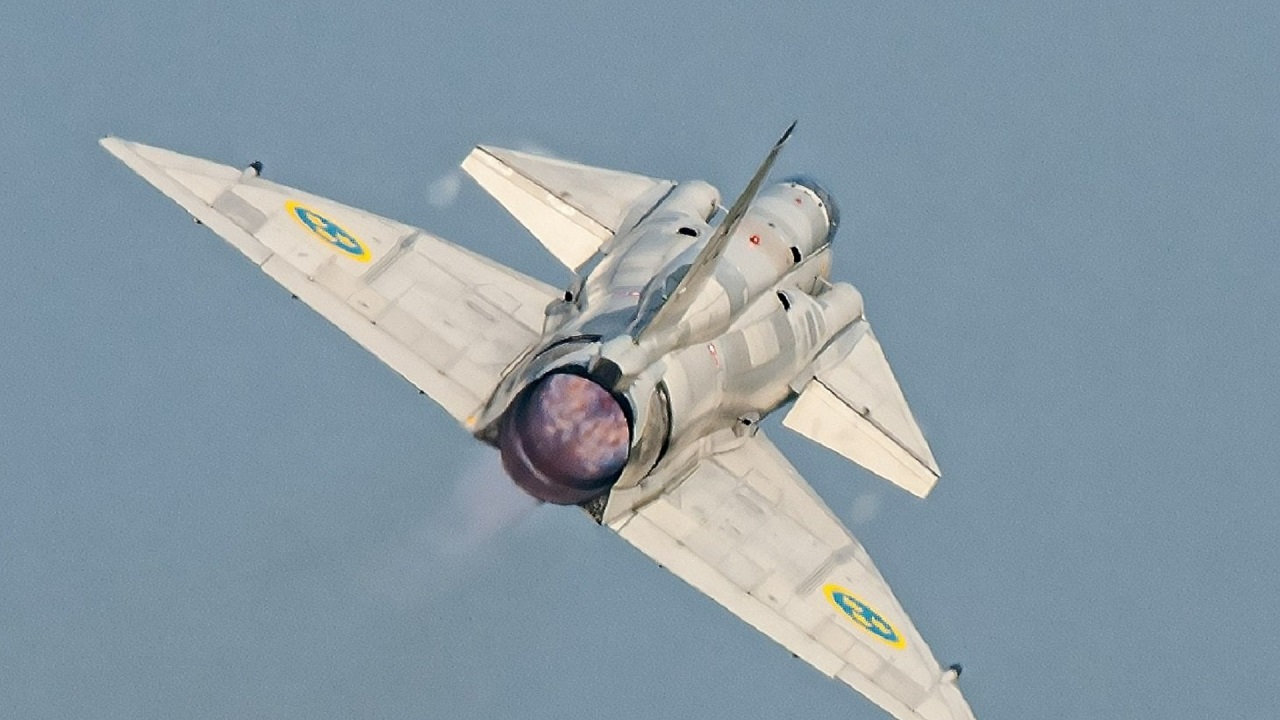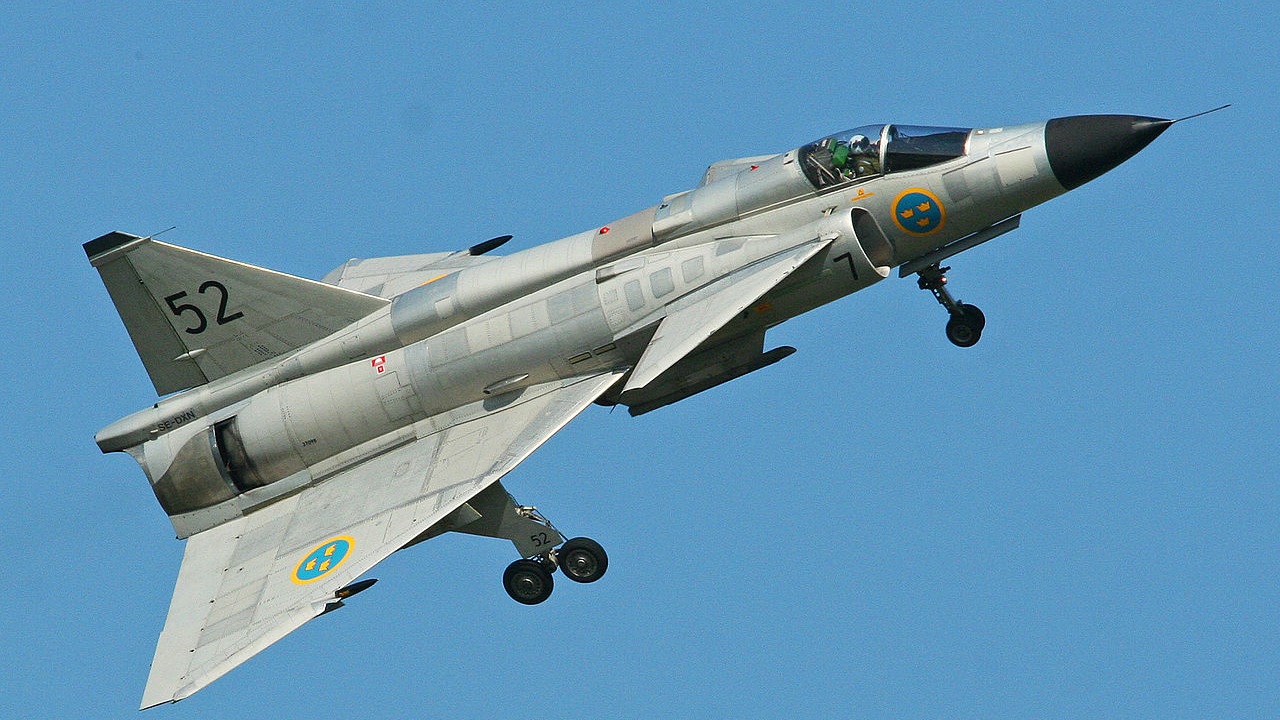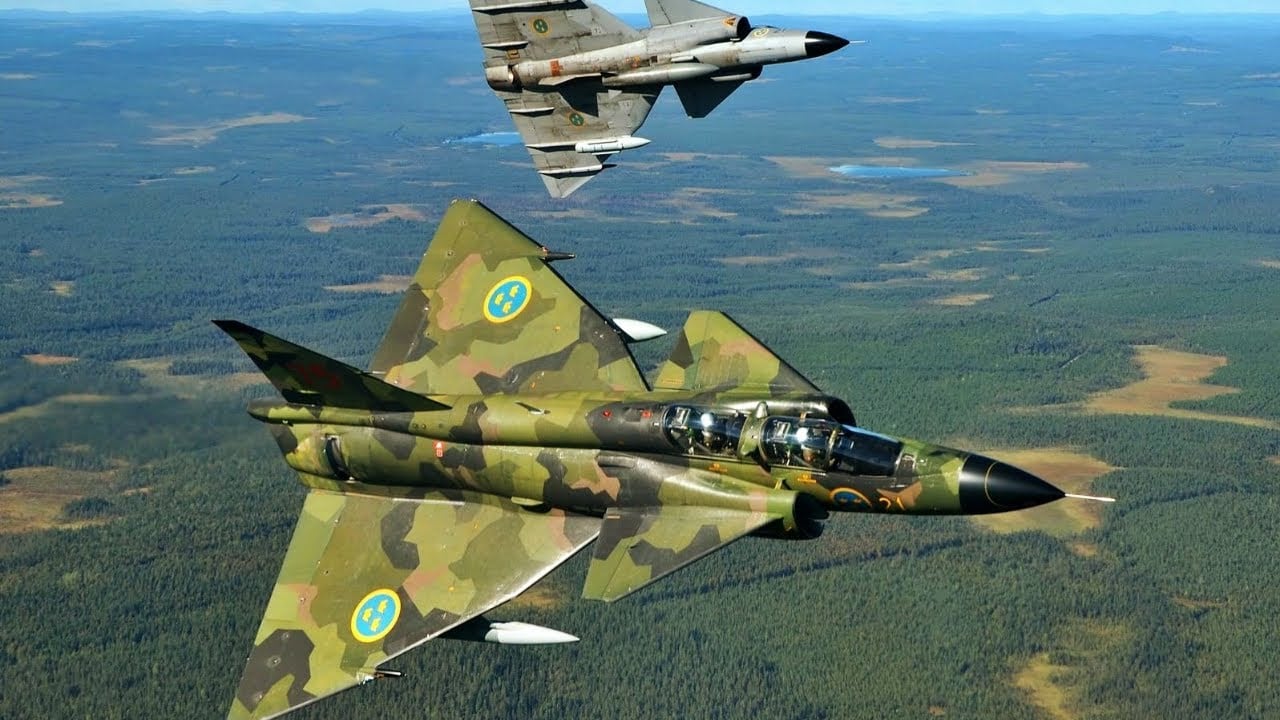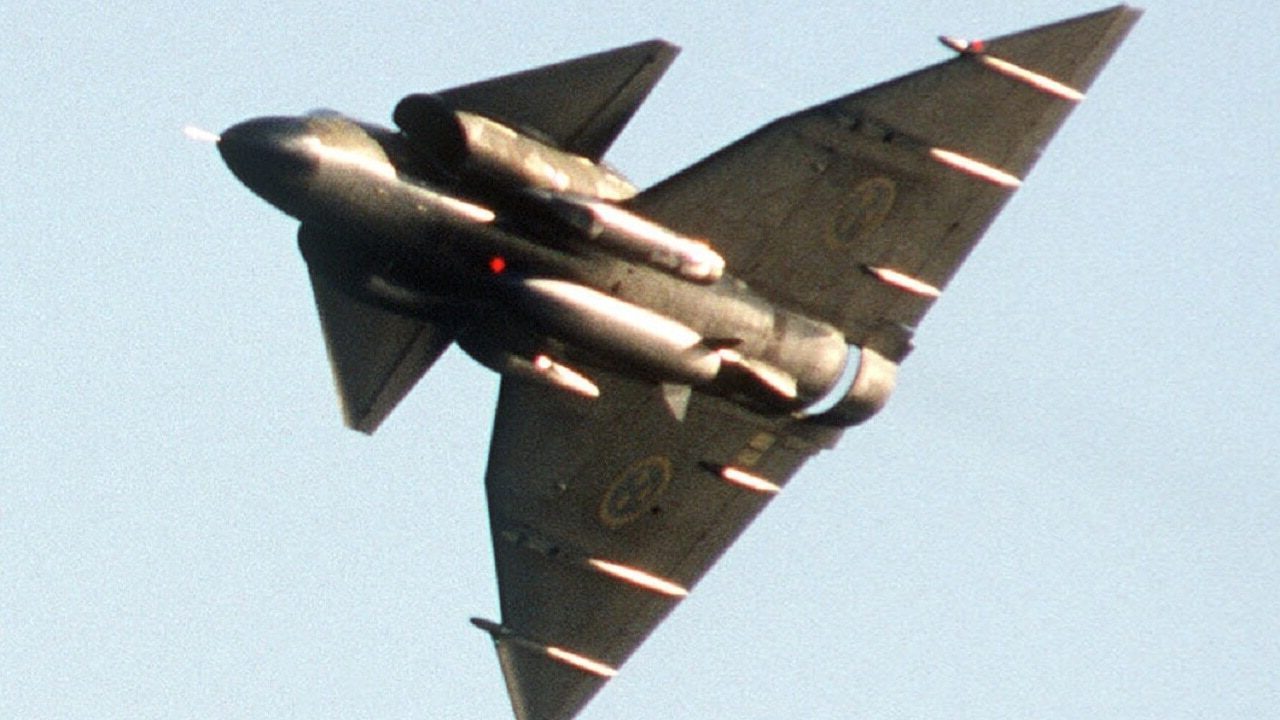Key Points and Summary: The Saab 37 Viggen was a revolutionary Cold War jet fighter that combined speed, versatility, and cutting-edge technology. It has one mission: ensure Russia’s MiG fighters – or anyone else – could be defeated in the sky.
-Capable of reaching Mach 2.1, it featured an advanced onboard digital computer that enhanced pilot situational awareness—years ahead of its time.

Saab 37 Viggen. Image Credit: Creative Commons.
-Designed for air superiority, ground strikes, and reconnaissance, the Viggen even locked onto an SR-71 Blackbird, showcasing its radar power. With its ability to intercept enemy aircraft and conduct maritime attacks, it was a key player in Sweden’s air defense. Though retired in 2005, the Viggen’s innovations influenced modern fighter jets, solidifying its place in aviation history.
Why Sweden’s Saab 37 Viggen Was a Game-Changer in Fighter Aviation
After retiring the Saab J-29 Duggan jet fighter in the 1970s, Swedish engineers and designers looked to produce something faster and more powerful.
This became the impetus for the Saab 37 Viggen introduced in 1971.
The Swedes had a knack for making memorable and agile airframes with innovative designs and features ahead of their time.
Let’s look at this Viggen and see why it was so special.
Cutting Through the Skies Like a Knife on Butter
First, this hot rod could knife through the skies at MACH 2.1.
It even had one of the early onboard digital computers. The Swedes figured out the modern practice of integrating radar and sensors to make the warbird more survivable while increasing the pilot’s situational awareness.
Surprisingly, the Viggen once tracked down an SR-71 Blackbird and locked on the ultra-fast spy plane with its powerful radar. This got the Americans to take notice, and the aviation world soon realized that the Swedes had a hit on their hands.
The Saab 37 Viggen’s remarkable speed compares it favorably with the engine output and thrust of the American F-22 and the Russian Su-35, which can also hit MACH 2.
This Multi-role Fighter Was a Jewel
The Viggen played many roles in the non-aligned and neutral Swedish military. It could serve as a fighter-bomber, collect reconnaissance data, and potentially dogfight with the best.
Since the Viggen was so fast, the Swedes had a considerable advantage in homeland defense and air policing roles.
This is just what the country needed during the Cold War when the Soviet air force grew in numbers and capabilities.

Making its first UK Airshow appearance, this amazing Saab 37 Viggen is operated by the Swedish AF Heritage Flight in genuine F7 markings. Seen during its solo routine. c/n 37-098. 2013 Waddington Airshow. 6-7-2013
Was It the First Flying Computer?
The digital computer was a marvel then, and there was nothing like it in the air. This system performed tasks the pilots did not have to do – making the aviators’ job easier.
“The Viggen incorporated the CK 37 (Centralkalkylator) computer, the first airborne computer with integrated circuits. This system would end up integrating radar, air-defence screens (Stril 60), and computers, and the Viggen were intended to be the platform for such a system. This system made the aircraft extremely advanced in comparison to other designs,” according to Plane Encyclopedia.
Saab 37 Viggen Specs Were Impressive
The Saab 37 Viggen had a large rear-mounted delta wing forward canards by the engine outlets and a big tailfin. The wingspan was nearly 35 feet with an empty weight of 26,000 pounds.
The RM8A engine was based on a Pratt & Whitney JT8D-22 turbofan that powered commercial airliners. This afterburning thrust enabled the blistering speed and a ceiling of 60,000 feet.
The Viggen was known for its substantial weapons payload. Unguided bombs and rockets adorned its wings. Interestingly, it could take on maritime attack missions with anti-ship missiles. Other air-to-surface missiles gave it an enviable ground strike role. For the dogfighting role, it had an early version of the Sidewinder air-to-air missile.
This Hunter-Killer Could Look Down and Shoot Down
“Avionics systems were largely different. The primary sensor was the Ericsson PS-46/A medium-pulse rate, pulse-Doppler, X-band, multimode radar, with a range of about 48 kilometers (30 miles) and ‘look down / shoot down’ capabilities, to allow it to find and target low-altitude intruders trying to hide in ground clutter. It was a state-of-the-art system at the time of its introduction,” according to Air Vectors.net.
A reconnaissance variant of Viggen in 1973 enabled the airplane to spy on ships for better coastal defense. Cameras were installed on the nose to collect the intelligence data.
The Viggen was better known for air superiority and interceptor roles. It was great for homeland defense and air policing.

Saab 37 Viggen. Image Credit: Creative Commons.
Remarkably, the Saab 37 Viggen stayed active with the Swedish Air Force until 2005 and paved the way for the JAS 39 Gripen, a high-quality warbird.
The Saab 37 Viggen is another example of Swedish aerospace engineering expertise. It was fast with a huge weapons payload. It could attack ships, intercept fighters, and perform recon duty. The aerial computer was pathbreaking and spawned many copycats.
The Viggen is not widely known because Sweden was neutral during the Cold War, and it did not engage in offensive missions. Still, as a defender of Swedish sovereignty, its performance aspects were legendary. Many other countries were impressed with the Viggen and began to emulate it in the 1970s and 1980s, especially when developing onboard computers. The Viggen’s speed also impressed competitors.
The Saab 37 Viggen could serve in many roles. This versatility was perfect for guarding Sweden’s borders. Pilots and Air Force ground crews will remember it fondly.
If you served in the Swedish Air Force during the Cold War and after, you could tell interesting stories about flying this airplane. It will go down as one of the best fighters in Swedish history.
About the Author: Dr. Brent M. Eastwood
Brent M. Eastwood, PhD, is the author of Don’t Turn Your Back On the World: a Conservative Foreign Policy and Humans, Machines, and Data: Future Trends in Warfare, plus two other books. Brent was the founder and CEO of a tech firm that predicted world events using artificial intelligence. He served as a legislative fellow for U.S. Senator Tim Scott and advised the senator on defense and foreign policy issues. He has taught at American University, George Washington University, and George Mason University. Brent is a former U.S. Army Infantry officer. He can be followed on X @BMEastwood.

